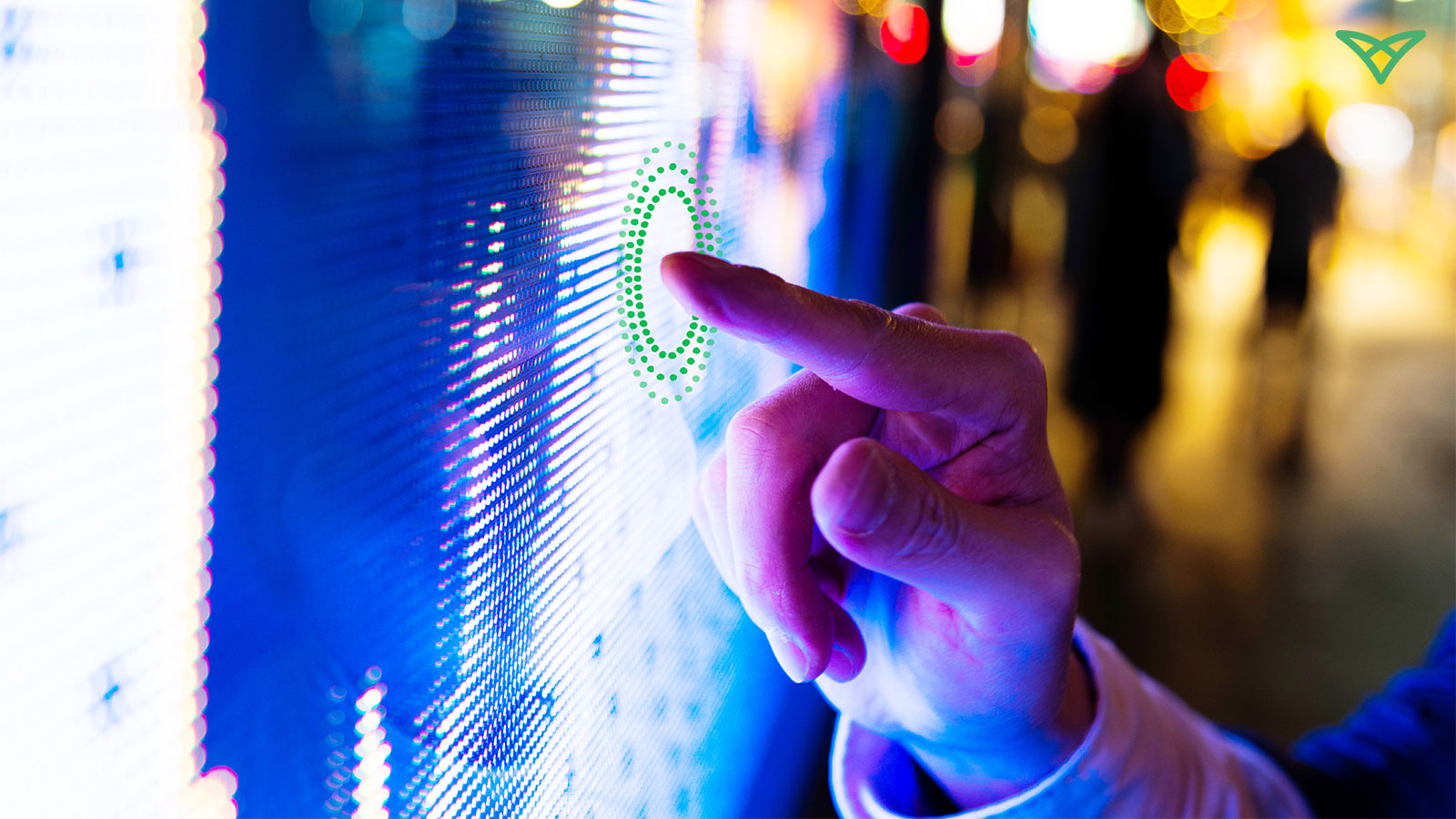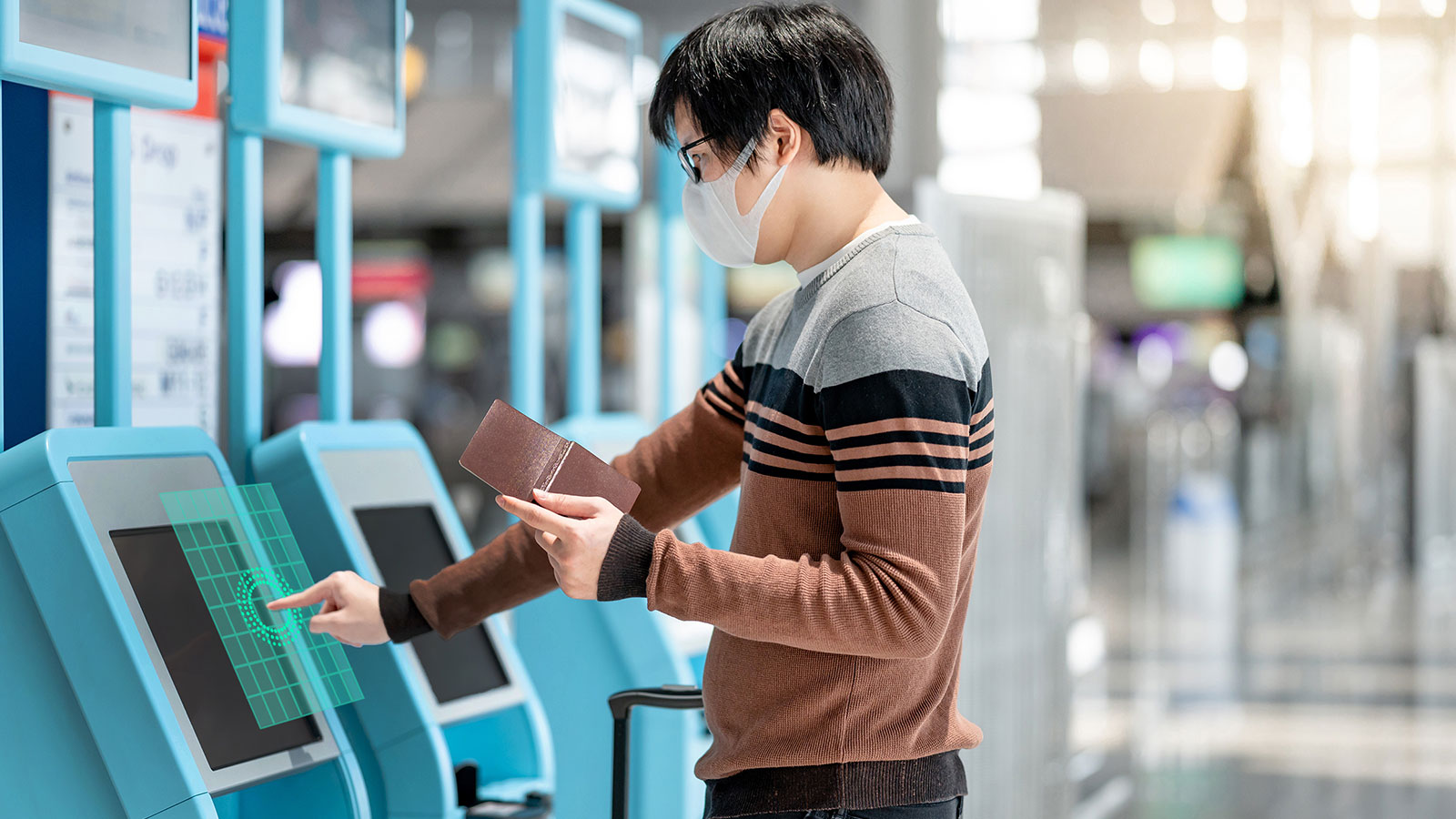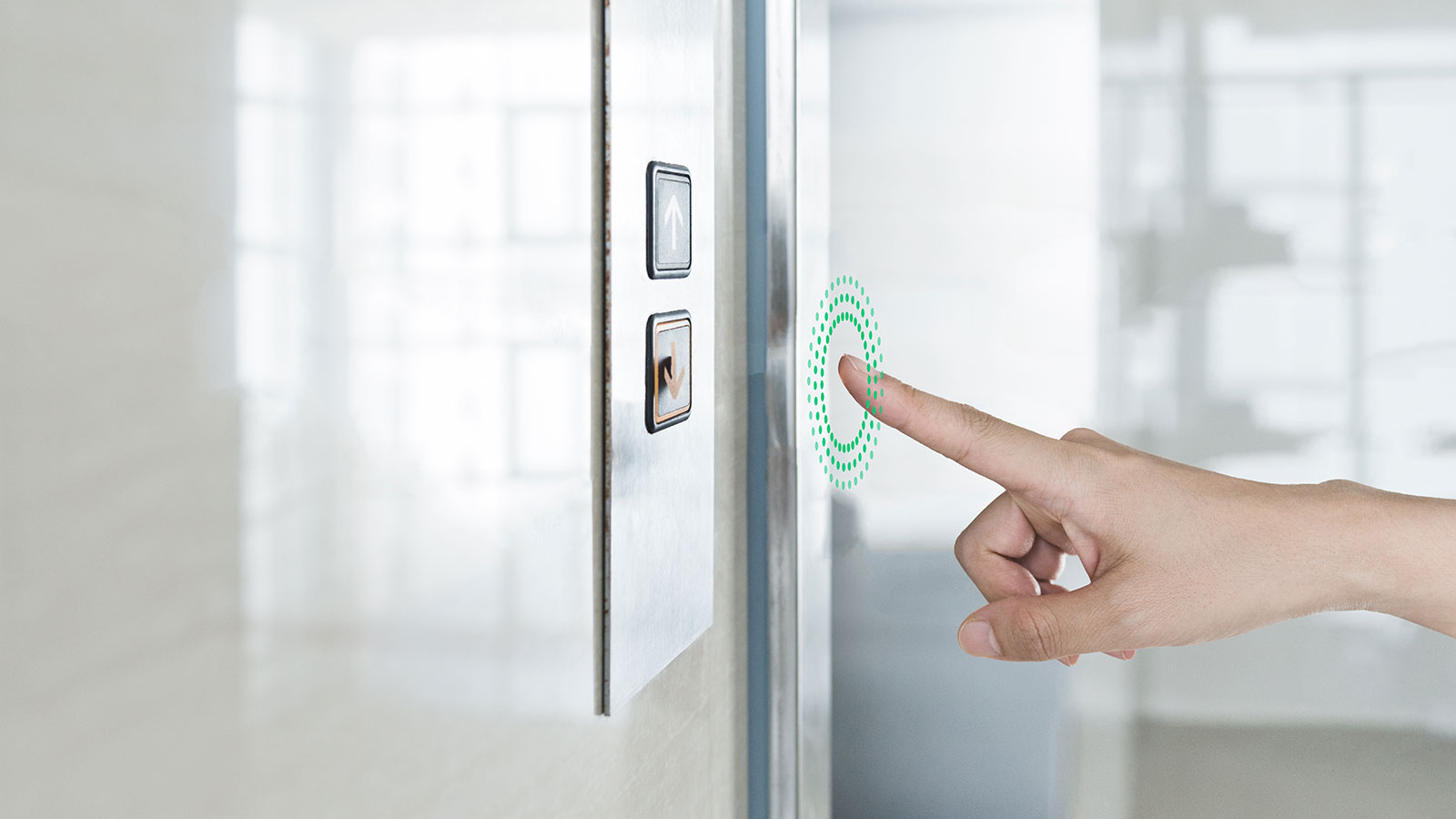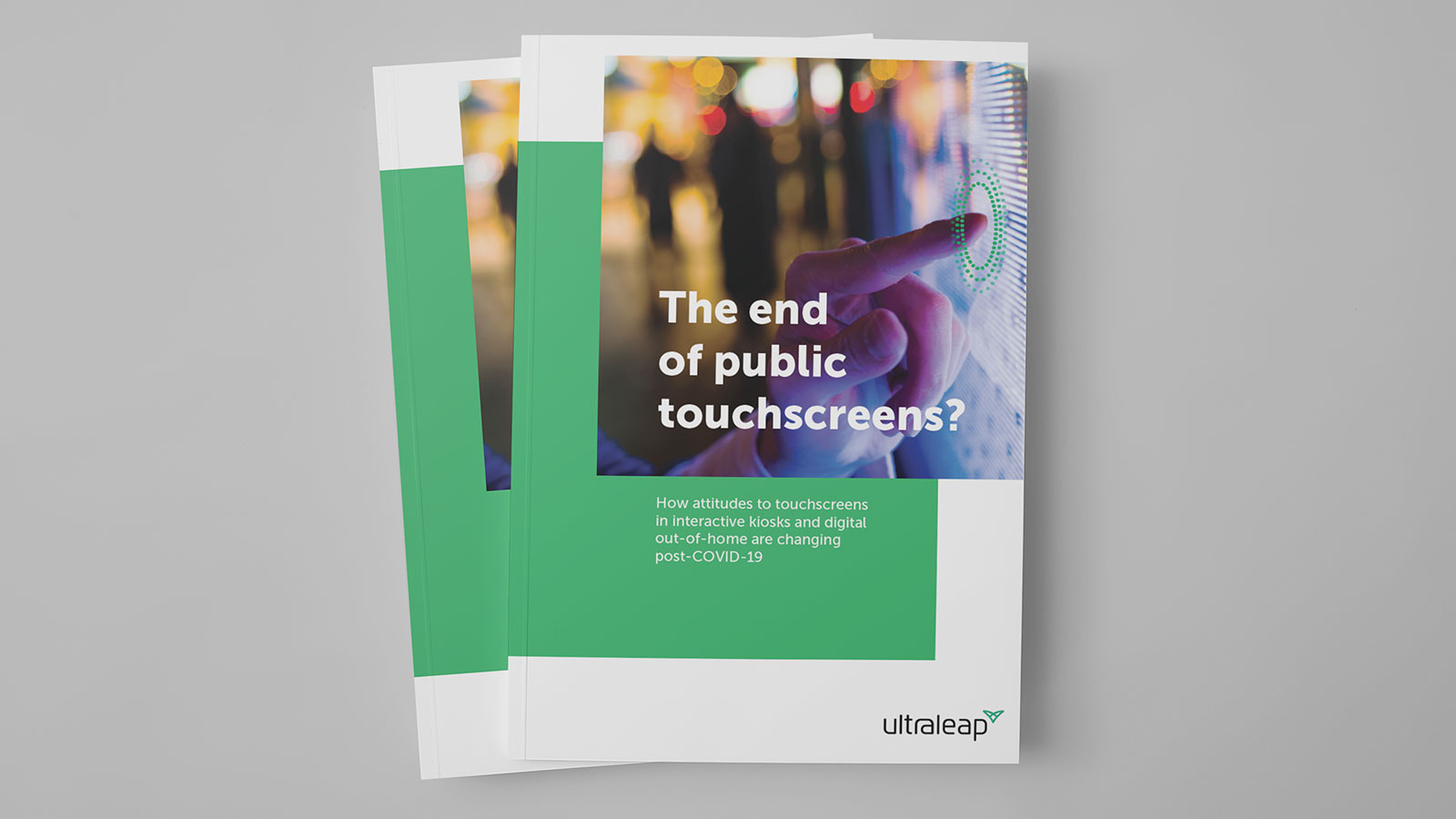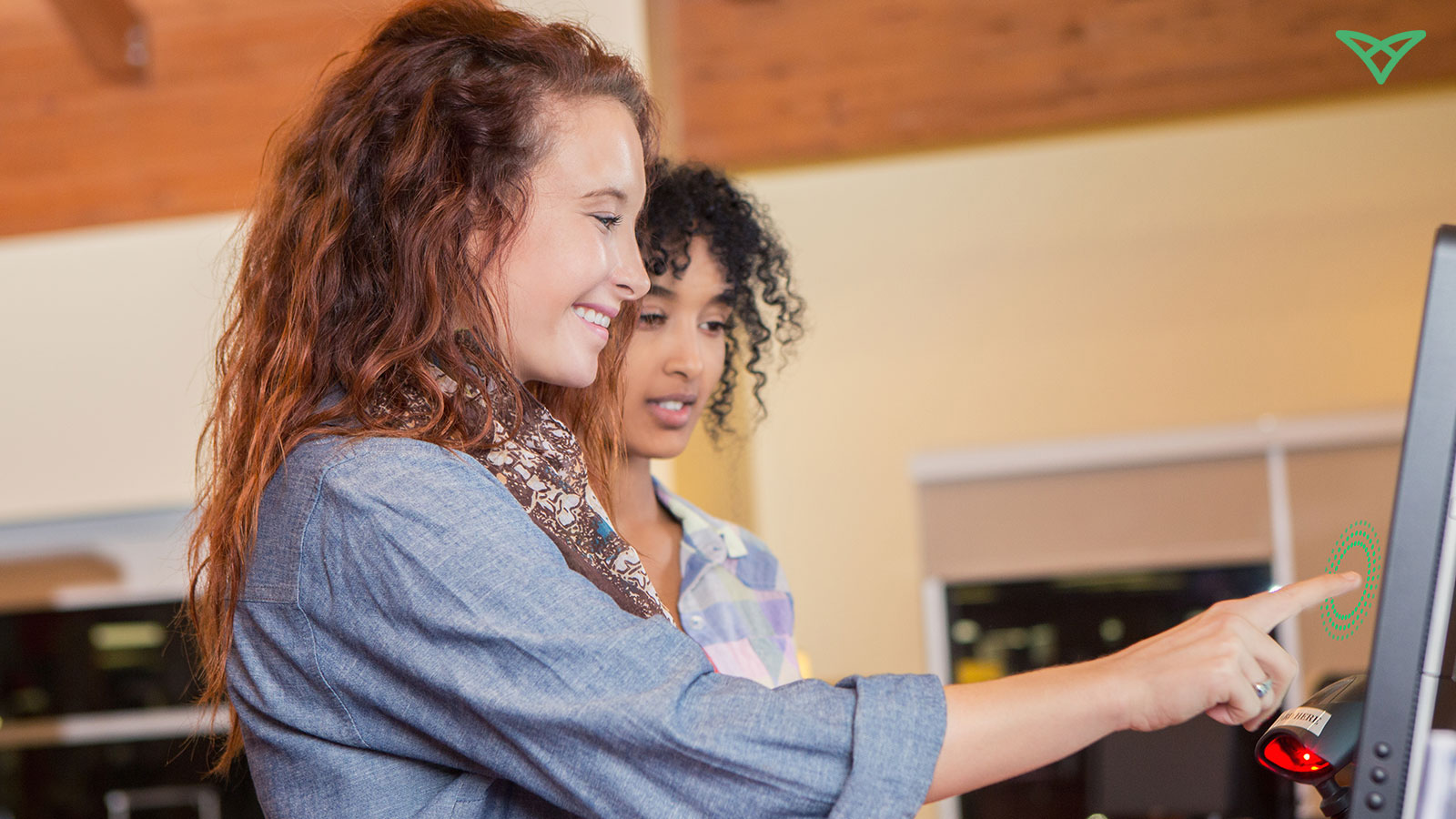
Touchless Self-Ordering: The Future of QSR
Posted; November 20, 2020
Consumers are demanding more hygienic self-ordering solutions in quick-service restaurants (QSR). Our Touchless Self-Ordering demo shows how to use gesture control to develop touchless kiosks, with minimal impact on user journey time.
COVID-19 has significantly changed consumers’ perceptions of the hygiene risks of using self-serve kiosks. 78% of US consumers and 81% of UK consumers now think that public touchscreens are unhygienic.
While the jury is still out on the scale of the risk posed by shared touchscreens in relation to COVID-19, these changes in consumer perception are real. Even prior to the pandemic, there were concerns about touchscreen hygiene in QSR. A widely reported 2018 study found faecal bacteria on the touchscreens of fast-food kiosks.
The resulting behaviour change is also likely to be lasting, according to the EY Future Consumer Index.
We asked US and UK consumers how they would prefer to order and pay for a meal in a food court, comparing two contact methods (touchscreen and go to counter) with two touchless methods (mobile app and touchless gesture control).
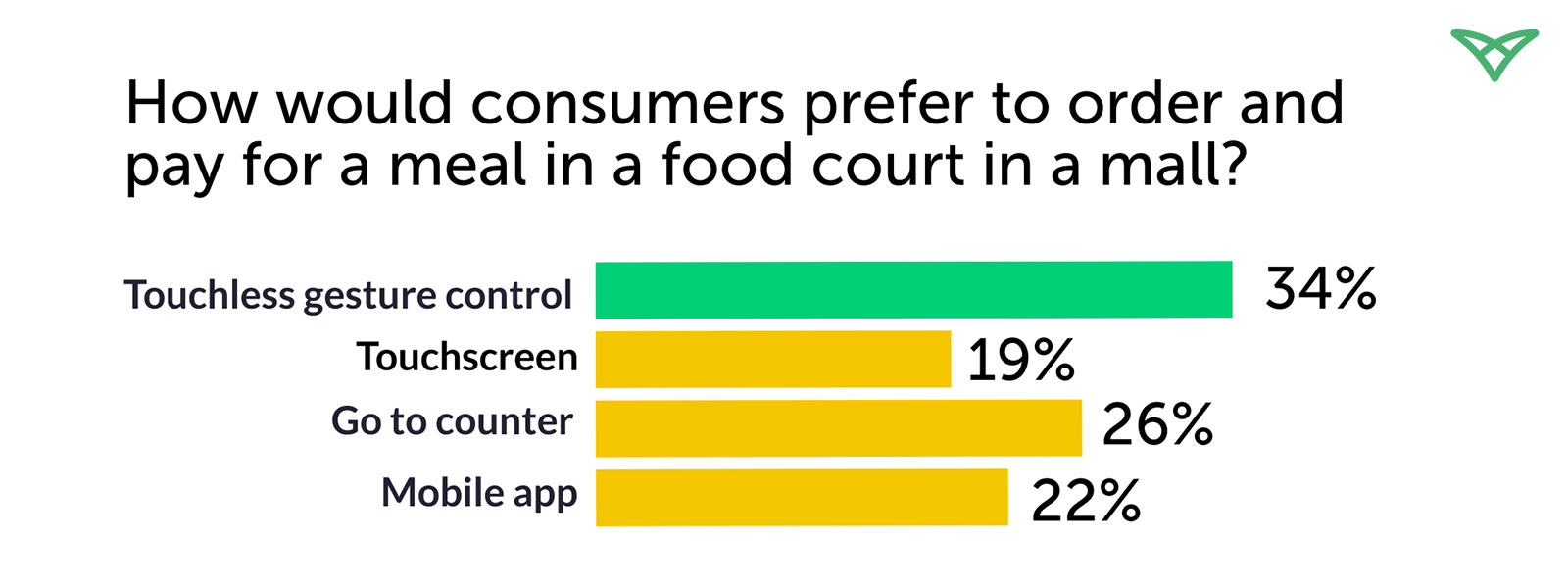
Averaging the data across first and second preferences, a self-ordering kiosk operated by touchless gesture control was consumers’ number one choice.
Our downloadable Touchless Self-Ordering demo shows how a self-ordering kiosk operated by touchless gesture control can be created in practice, and with minimal impact on user journey time.
The demo was based on our design guidelines for creating touchless interfaces powered by gesture control.
Usability testing has indicated that it is possible for users to achieve close-to-touchscreen speeds with our recommended “Air Push” interaction style (following a few seconds up-front to learn the very first time they use it). Larger-scale studies to further validate this are planned for the near future.
Touchless Self-Ordering Demo – Key Features
- Runs using the TouchFree application. This can be used to retrofit existing kiosks with touchless gesture control. It runs invisibly on top of existing user interfaces, allowing you to add touchless capability without writing a single line of code or changing the current user interface.
- Quick and intuitive “Air Push” interaction style based on how users typically interact with touchscreens.
- Customers have control and choice of preferred interaction style – gesture control or touchscreen
- Includes pre-built “Call to Interact” animation to help users understand touchless interaction quickly
- Hand movements can be reliably detected up to 75 cm away from the surface
- Uses Ultraleap’s world-leading hand tracking hardware and software – fast, robust, and accurate
About the “Call to Interact” animation
The “Call to Interact” (or CTI) is how we educate first-time users of touchless kiosks. It helps users quickly recognize that the kiosk is touchless as they are approaching it, and guides them as to how to use it.
Our recommendations around the Call to Interact are based on over a year’s user research and evaluation of different methods. The project pre-dates the COVID-19 pandemic although was significantly accelerated by it.
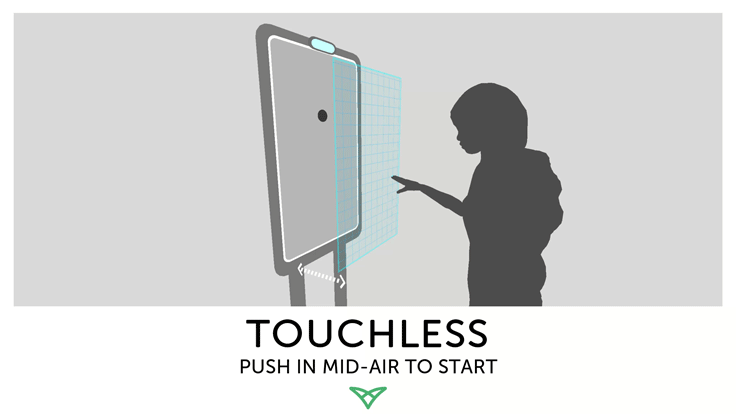
Our research has found that a short, instructional video or animation (5-8 seconds long) is the most effective Call to Interact. It is played on-screen when the kiosk is not in use, drawing a user’s attention.
As a user approaches the kiosk, the instructional video or animation plays until the user performs the correct interaction type for the kiosk. This allows them to practise before the regular kiosk experience begins.
You can find out more about creating a Call to Interact animation, and other recommendations, on our documentation site.


Interested in integrating gesture control into self-ordering kiosks?
Contact us for support and licensing.
By signing up, you are agreeing to our privacy policy.
Ready to move beyond?
Explore our blogs, whitepapers and case studies to find out more.
